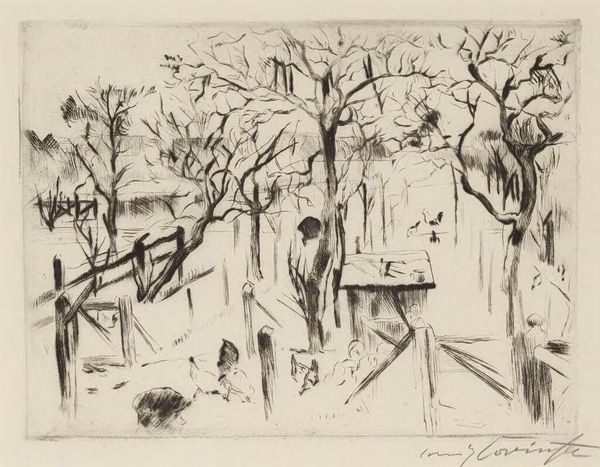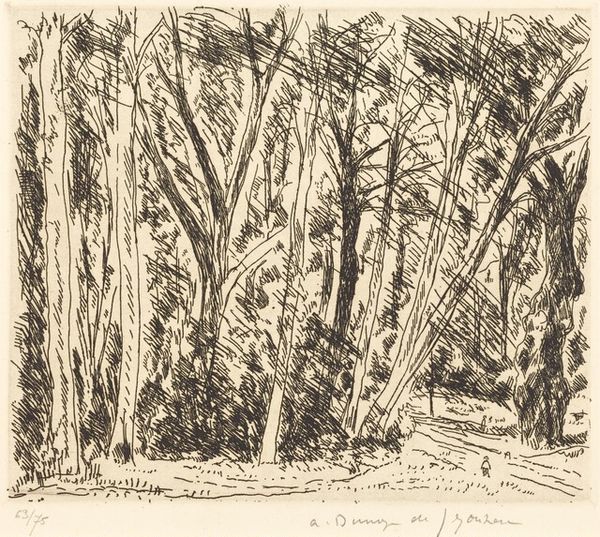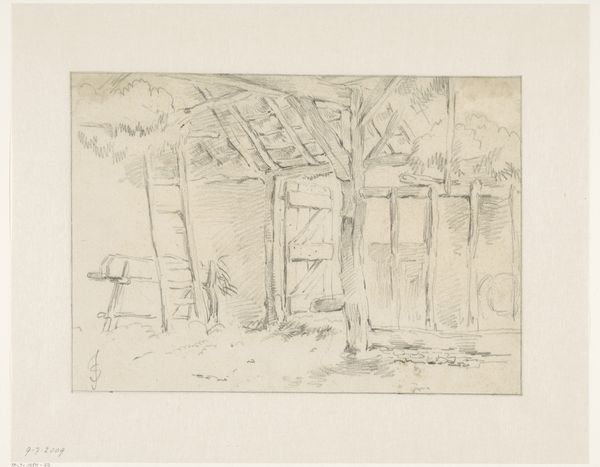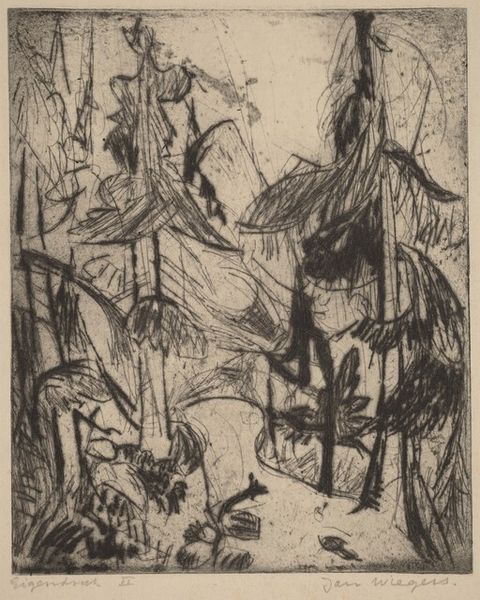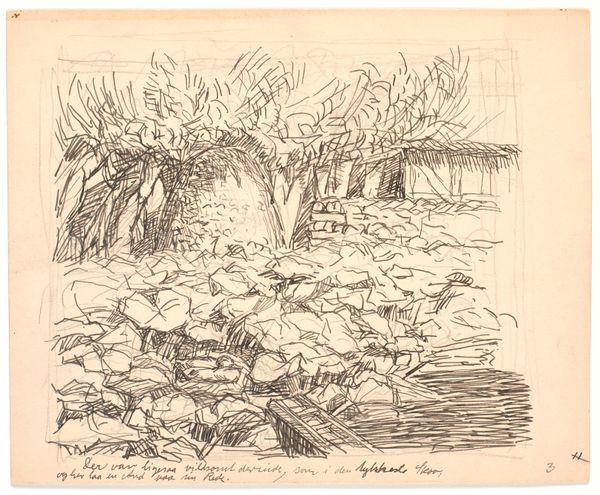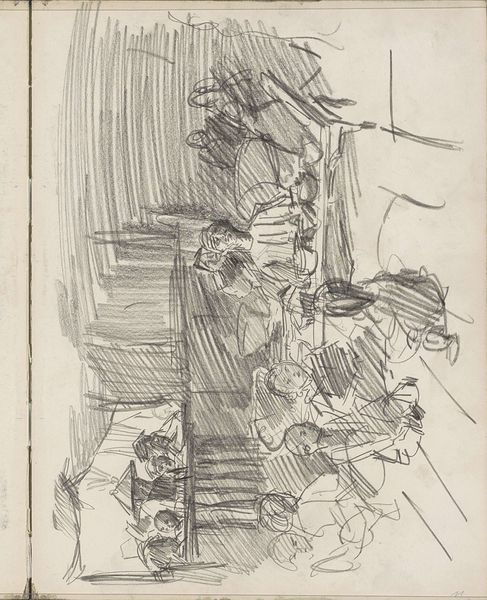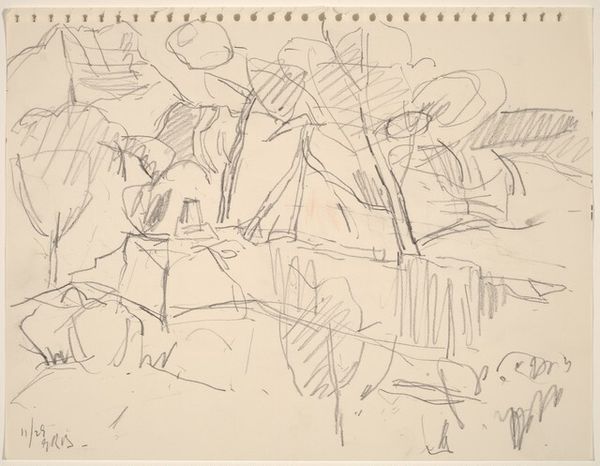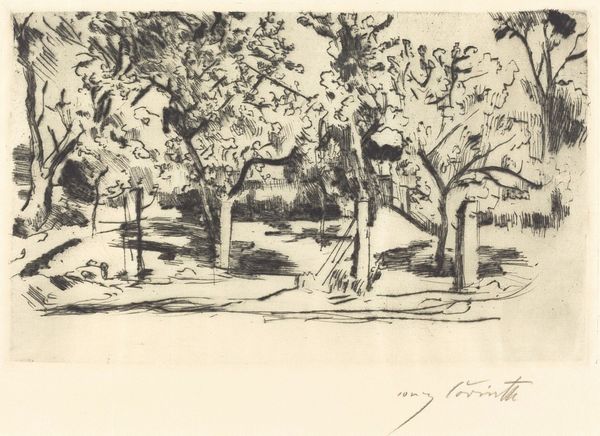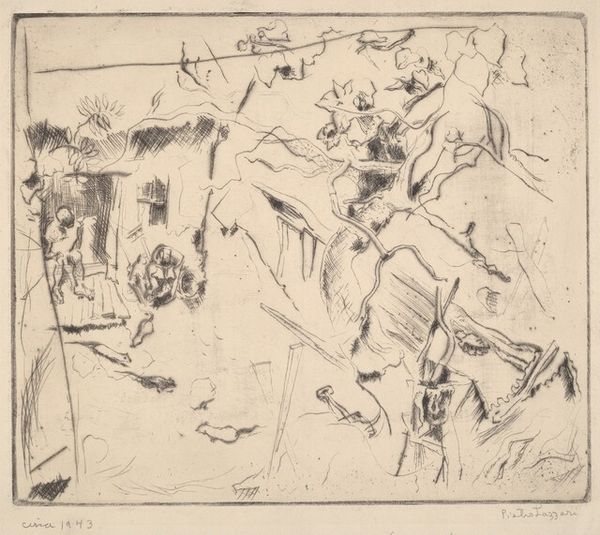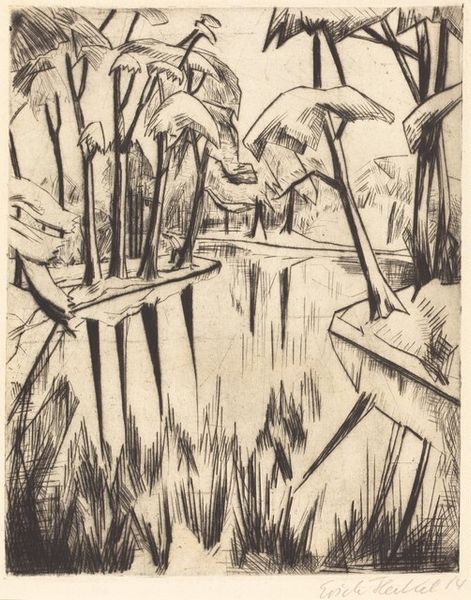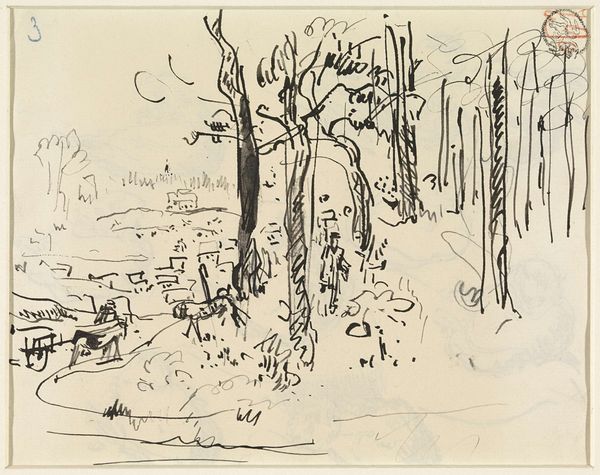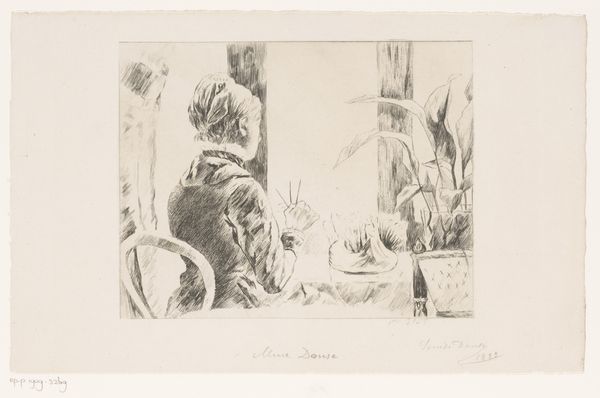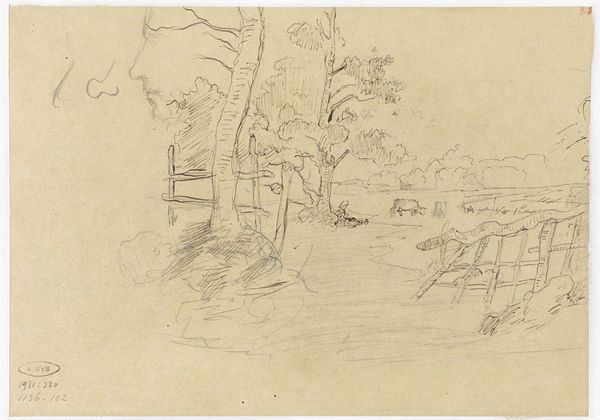
drawing, ink, pen
#
drawing
#
landscape
#
ink
#
expressionism
#
pen
Copyright: Public Domain: Artvee
Editor: Lovis Corinth’s "Fruit Garden in Autumn," created in 1912 using pen and ink, is quite striking. It’s spare, almost skeletal, yet it feels vibrant. What strikes you when you look at it? Curator: The starkness you mention is crucial. Consider the context: pre-war Europe. Expressionism sought to depict not just surface appearances, but the raw emotion and anxiety lurking beneath. The leafless trees, the scratching lines – Corinth uses the landscape to mirror a sense of unease prevalent at the time. Do you think that resonates today? Editor: Absolutely. It’s interesting how the formal qualities mirror societal tensions. So, beyond reflecting pre-war anxiety, what public role might a piece like this have served or aimed for? Curator: Expressionist artists aimed to provoke, to challenge bourgeois sensibilities. They critiqued societal norms, often highlighting alienation and psychological distress. Prints like this, because they're reproducible, were more accessible than unique paintings. This allowed the artist to engage in wider social commentary, circulating these feelings among the population. Did Corinth succeed, in your opinion? Editor: Definitely. Knowing the context enriches the viewing experience so much. I wouldn't have seen that societal critique as clearly without your insight. Curator: It's also worth thinking about the institution’s role here. By displaying and interpreting "Fruit Garden," museums like this one participate in shaping how we understand not only Corinth’s individual expression but also the collective anxieties of his era. Ultimately, it shapes our understanding of ourselves. Editor: That's really fascinating. It gives me a lot to think about regarding the artist’s intentions, the socio-political climate, and the institution's curatorial power.
Comments
No comments
Be the first to comment and join the conversation on the ultimate creative platform.
